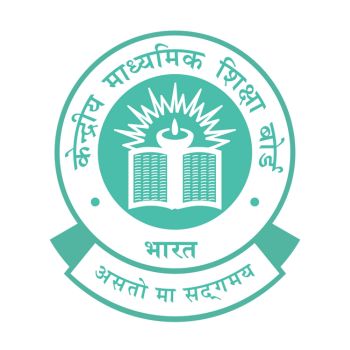To prepare yourself for the GMAT Exam, it’s imperative to study the GMAT Exam Syllabus in detail. Let’s break it down in this article!
The GMAT Exam Syllabus or the Graduate Management Admission Test Exam Syllabus is divided into 4 sections: Quantitative Reasoning, Verbal Reasoning, Integrated Reasoning, and Analytical Writing Assessment.
For most international business degrees, the GMAT is one of the top priorities when it comes to the eligibility criteria for a good college or university. It assesses your capabilities to complete the degree program you’re applying for, and also helps the admissions committee decide whether you have what it takes to become a part of their renowned college.
Let’s take a close look at the GMAT Exam Syllabus with all its four sections, along with the eligibility requirements, exam fee, duration of the exam, and more.
GMAT Exam Syllabus and More [Eligibility, Fee, Duration]
GMAT Exam Eligibility
- The GMAT Exam is conducted by the Graduate Management Aptitude Council or GMAC and does not require any specific educational qualification. The exam does not require you to be from a specific background, race, ethnicity, etc., and is available for attempting to all students all across the globe.
- However, a candidate must be 18 years of age or above to apply for the GMAT exam without consent. If you are from ages 13 to 17, you can still attempt the GMAT Exam but you will need a written proof from a guardian for the same.
- There is no upper limit to the age criteria of the GMAT Exam.
- You require a Bachelor’s degree to apply for this exam.
- You can take the GMAT Exam even if you didn’t complete your studies from an English medium institution, because the GMAT Exam will anyway test your Verbal Reasoning ability.
GMAT Exam Fee
- The GMAT Exam Fee for taking the exam at a test centre is USD 275, which comes out to be approximately Rs. 22,800.
- If you wish to take the online GMAT Exam, the fee is USD 300, which is approximately Rs. 24,600.
GMAT Exam Duration
The GMAT Exam is 3 hours and 7 minutes long. The division of this duration into sections is explained in the syllabus segment below.
GMAT Exam Syllabus Section 1: Quantitative Reasoning
The Quantitative Reasoning section has 31 questions with 62 minutes to attempt the questions. This section judges your ability to solve mathematical problems within a limited time frame while challenging your analytical skills.
All questions have 5 choices that you can pick from. You need to solve your problem there and then and pick an answer from the 5 options provided to you as possible answers. The mathematical problems are considered to be basic and easy for anybody who has studied basic problem-solving for preparation.
The questions have algebra such as equations, polygons, coordinate geometry, etc., word problems like time and work, simple and compound interest, profit and loss, data interpretation, geometry and coordinate geometry and questions of the like. You may also find some questions related to sets, ratio and proportion, and other basic concepts that you might have studied after your 10th grade.
GMAT Exam Syllabus Section 2: Verbal Reasoning
This section consists of 36 questions for students to attempt. The questions are supposed to be answered in 65 minutes.
The Verbal Reasoning section tests your ability to understand complex arguments along with how well you’re able to read difficult texts and comprehend everything.
In this section, you’ll have a Reading Comprehension of up to 350 words. After reading the passage, you’ll be asked to answer questions according to your understanding after you’ve read the passage.
Apart from the Reading Comprehension, you’ll also have Critical Reasoning and Sentence Correction. Under these sub-sections, you’ll be performing an analysis of a situation and forming a plan of action based on shorter passages than the ones in the Reading Comprehension (Critical Reasoning). You will also do grammatical construction, use idioms, logical prediction, rhetorical construction, verbs, etc. (Sentence Correction).
This section can sometimes be a bit tricky because students tend to focus less on Verbal Reasoning during preparations and revisions, and when they actually sit for the GMAT Exam, the questions of the Verbal Reasoning section are a bit difficult to comprehend and attempt.
GMAT Exam Syllabus Section 3: Integrated Reasoning
For the Integrated Reasoning section, you will be given 30 minutes to answer 12 questions.
This section can be a new sort of concept for people preparing for the GMAT Exam for the first time. You are required to evaluate and assess information presented in multiple formats in this section. This section is sort of a mixture of the Quantitative Reasoning and the Verbal Reasoning sections.
You can be asked to do graphic interpretation in the form of bar graphs, line graphs, bubble graphs, etc., which are taught very early in schools and are not very difficult to comprehend.
Table analysis is another type of question that can be asked where you will determine statistics, ratios, proportions, etc., from a given table with a list of menus to check.
This section requires the presence of mind and a bit of dexterity to navigate through the question properly and attempt the questions with careful consideration.
GMAT Exam Syllabus Section 4: Analytical Writing Assessment
For the final 30 minutes of the GMAT Exam, you’ll be writing an Analytical Writing Assessment.
This section demands you to carefully learn about a new argument and write a monologue or a critique on it. The question tries to gather your knowledge on various topics not by asking you to choose the correct answers but by framing your own opinion on a subject.
The topics are usually easy and understandable, of general interest, and sometimes are also related to business, because the GMAT Exam is a management test in itself. You will be tested on how well you organise your argument and what examples and beliefs you put to use to support your viewpoint.
Opinion
Preparing for the GMAT Exam can sometimes seem a little daunting especially after closely studying the GMAT Exam Syllabus. However, if you prepare well and devote a minimum of 1 hour per day to your preparation even with enough breaks during weekends, you will easily be able to get a good GMAT score.
Landing an admission offer letter from a prestigious business school becomes way easier if you have a good GMAT score because your application file will be given the maximum priority during the admission and selection process if you score well in the GMAT Exam.
All the best for your preparation!
Image taken from here.










